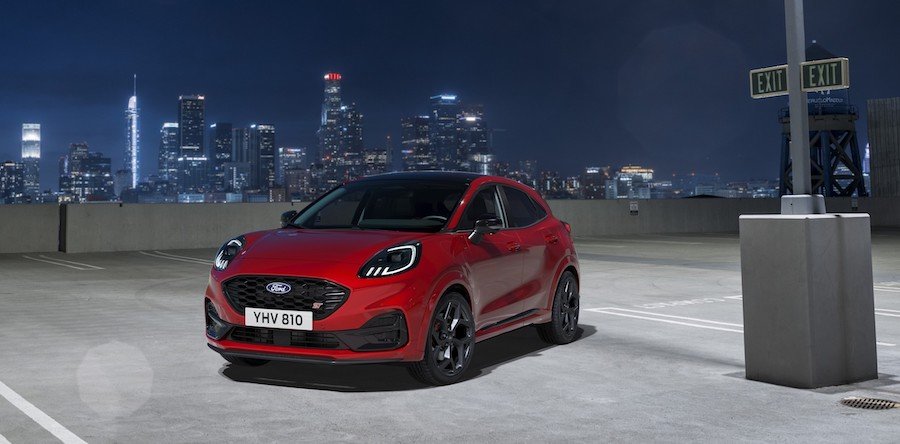Ford Gives Puma a Technological Shot in the Arm, Cuts the Other Arm off the ST Trim

The market conditions have changed substantially since Ford launched Puma in 2019. Not only is the small SUV segment ripe with ambitious contenders, but Ford itself has abandoned the Fiesta. As such, Puma's role has become more critical than ever to conquer new customers from both hatchback and crossover B segments. The refreshed Puma has received an impressive technological package to make the mission easier to accomplish.
Ford is undoubtedly confident this will be enough to lure more buyers, considering that the design changes are non-existent. At the front, there's the new Ford badge and a new light signature, thanks to the redesigned daytime running lights. Depending on the trim, the Puma could be had with either a chrome-delete grille (Titanium) or a more aggressive front bumper (ST-Line versions). If we also count the new exterior colors, these are about all the changes you'll notice from the outside.
However, changes are more profound under the skin. Since we've already discussed the new headlights, you can order them with the optional Dynamic Matrix LED technology. This uses Predictive Dynamic Bending Light to monitor the road ahead and shine light into corners to help drivers see more clearly.
Ford has used more of its magic inside, with a new dashboard layout, larger infotainment screen, and two-spoke steering wheel design. Ford resigned to the current trend of replacing physical buttons with touchscreen controls but thought bigger screens could make up for this change. The 12.8-inch digital instrument panel can be customized to offer the driver the most relevant information. The infotainment screen measures 12 inches across, up from the 8-inch screen of the outgoing model.
It's not only the interface that's changed but also the internals. The infotainment screen has been upgraded to SYNC 4, with twice the computing power of the previous version. With the Amazon Alexa integration, Ford touts better voice recognition using natural language. This works even without a connected smartphone, thanks to the 5G integrated modem. Wireless Apple CarPlay and Android Auto are also offered to those who prefer their smartphone's interface.
The new Puma excels in the driver assistance department, with new Intersection Assist, Reverse Brake Assist, and Rear Cross-Traffic Braking Assist, ready to correct the driver's mistakes. The Intelligent Adaptive Cruise Control system now gets Lane Centering and Predictive Speed Assist, which takes into account the curves in the road, roundabouts, and on- and off-ramps when adjusting the speed. A 360-degree surround-view camera system offers a bird's eye view of the car's surroundings.
All these upgrades are welcome, but the fans of the ST variant will decry the lack of a bigger displacement engine. The 1.5-liter powerplant has been discontinued, and the Puma uses 1.0-liter mild-hybrid engines throughout. They develop 123 or 153 horsepower in the "civilian" variants, whereas the Puma ST relies on a 168-horsepower version. That's a downgrade from the previous 197 horsepower of the 1.5-liter engine of the outgoing model. Only the lower-powered engine is available with a manual transmission, all others being paired to a seven-speed dual-clutch automatic.
Nouvelles connexes


